To mark the 30th anniversary of Qantas Boeing 747-400 VH-OJA becoming the first commercial aircraft to fly nonstop from London to Australia when it landed at Sydney Airport on August 17 1989, this story from the Australian Aviation archives comes from the January-February 2015 edition, when Tom Ballantyne wrote about being one of just 23 people on the history-making flight that broke a distance barrier previously thought unbreakable.
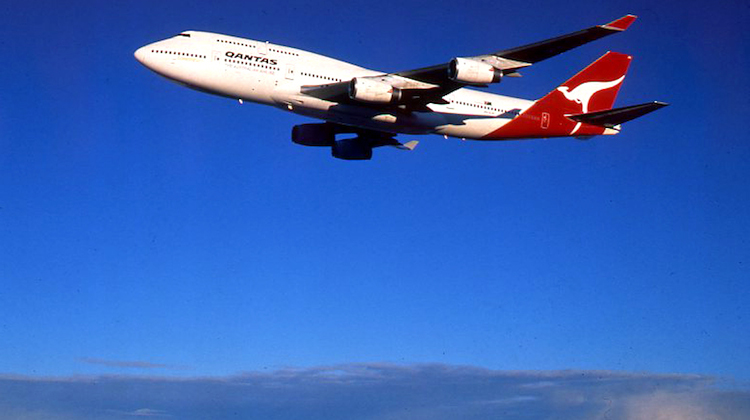
As the 1980s headed towards closure it was a turbulent time in Australian skies. The domestic aviation industry was in the midst of a bitter industrial dispute. Thousands of pilots were grounded as a pay dispute with their employers, private Ansett and government-owned Australian Airlines, dragged on.
But, internationally, Qantas was flying high. In August 1989 the Flying Kangaroo was due to take delivery of the first of 10 Boeing 747-400s, the latest version of the US manufacturer’s iconic jumbo jet, it had ordered at the time.
It was an opportunity planners at the airline meant to take full advantage of. To mark the plane’s introduction, it was suggested, the first aircraft, VH-OJA City of Canberra, should be flown from Boeing’s base at Seattle to London, then do something that had never been done before, blaze a trail by flying to Sydney nonstop.
It would promote the image of Qantas as a pioneering long-haul carrier.
“Initially the idea was regarded as crazy, for the aircraft did not have enough range,” Captain David Massy-Greene, who commanded the flight, wrote later.
“The nominal range of the -400 is 7,900 nautical miles (14,631 kilometres) and the proposal to fly it 9,700nm (17,964km) . . . surely someone was dyslexic!”
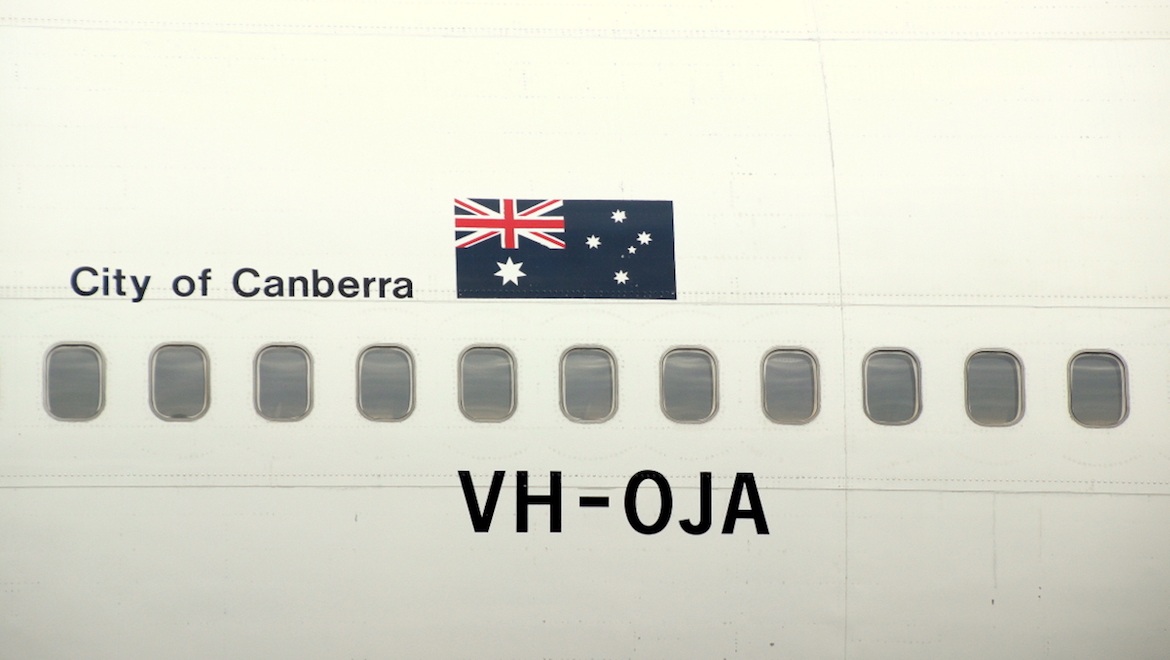
Even for this latest jet, with aerodynamic improvements such as winglets, a fuel tank in the horizontal stabiliser and new generation Rolls‑Royce RB211-524G engines, many thought it was a step too far. While it had a 14 per cent range improvement over its long-haul predecessor, the 747SP, its maximum range flying empty was still just 9,000nm (16,680km).
Crazy or not, Massy-Greene, who was the project pilot for the -400, was given the job of making it happen. In the end, squeezing out the extra range came down to three key factors: paring the weight of the aircraft to the absolute minimum, fuel and weather conditions.
The search for range-gaining measures was relentless. Galley equipment was kept to an absolute minimum, with no silver service for the 23 people on board. Only enough water was loaded for the small number of passengers. They were allowed only a carry-on bag with the rest of their luggage shipped to Sydney on a scheduled Qantas service.
Every possibility was explored. Reducing the bleed air demand from the engines for air-conditioning by using just one of the three air conditioning units theoretically gained around 0.5 per cent in range. Not using the fuel in the horizontal stabiliser tank until it was absolutely necessary and running the trim in flight down to its maximum aft centre of gravity permissible would keep the aircraft in its most efficient trim condition, use less fuel and gain another 0.4 per cent in range.
Safety equipment, except for the small number of passengers on board, was shipped separately, as were cargo restraint equipment, not needed in the empty cargo bay.
While all of this extended the reach it still didn’t get the City of Canberra to Botany Bay. What did was a special fuel supplied by Shell, produced in Germany, and a bit of help from nature.
As Massy-Greene explained it, fuel weight is limited by tank volume, but if the fuel itself was denser it meant the aircraft could carry more weight of fuel. In addition a slight increase in fuel quantity could be achieved by overfilling the fuel tanks, which are normally never quite topped up to leave some space for expansion and to prevent fuel spillage if it warms after fuelling. As long as fuelling was completed just prior to departure there would be no problem.
It had taken months to organise the fuel, which was shipped to London from Germany on nine tankers hired by Qantas, although not before there was a major issue. Shell had prepared the fuel in two batches and they would not mix. The solution: put it all in a rail tanker and shunt it up and down a siding to shake it up “like a giant cocktail mixer”.
It worked.
The resultant fuel was analysed and not only complied with the civil Jet A1 specification, it also had some very special characteristics. It was as dense as that specification allowed and it had an extraordinary freeze point – it had been tested to -70˚c – necessary during a long flight at extremely high and cold altitudes.
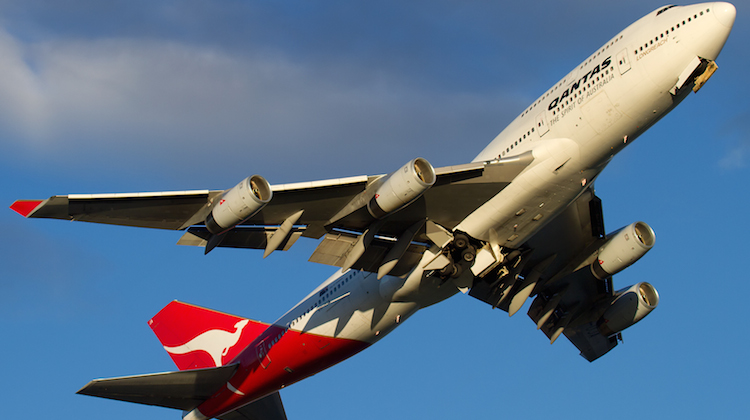
And so it was that early on the morning of August 16 Qantas flight QF7441 – there had been a delay when a pressure switch failed and had to be replaced – was towed right to the end of the runway at London’s Heathrow Airport, saving a little more – about half a tonne – of that precious fuel. ATC had also allowed the flight to takeoff on the arrival runway so the departure would not be delayed.
ATC gave immediate clearance to 30,000ft and at 9:09am UK time – 6:09pm in Sydney – we roared down Runway 27 Right and lifted off to head out over the green patchwork of fields of southern England and across the English Channel towards France.
Fears that the flight would be subject to the usual zig-zagging through Europe’s congested airspace soon diminished as controllers across the continent cleared a smooth path for this “special” flight.
Massy-Greene, in command, told me at the time: “They are literally clearing aeroplanes out of the sky in front of us. One guy was complaining he was a long-range flight and a little short of fuel and he wanted our altitude. Rhine radar control told him the flight at that altitude was flying a bit further than he was.”
Along with him were three other senior Qantas captains, Ray Heiniger, George Lindeman and Rob Greenop, as well as a Boeing pilot, Chet Chester. Also on board were Jim Clarke, Qantas’s manager performance engineering and a performance engineer from Boeing and one from Rolls-Royce, as well as two flight attendants.
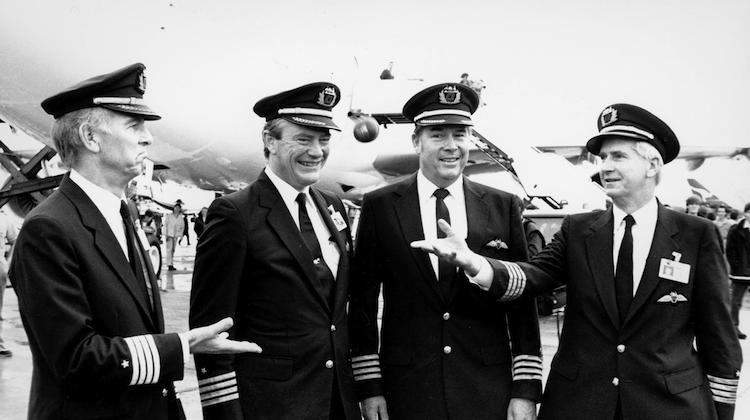
The 13 other passengers included four journalists. (Captain Lindeman, a direct descendant of Philip Gidley King, third governor of NSW, passed away aged 78 in 2011 after a long illness.)
By the time it is 10:30pm in Sydney we were flying across Turkey. Below is a landscape of desolate, rocky mountain peaks and valleys scattered with isolated villages. In the cockpit, Massy-Greene and Heiniger have been replaced by Lindeman and Greenop and they are deep in discussion about fuel.
There is growing concern that the weather reports are wrong and forecast strong tailwinds have failed to materialise. Fuel is being used at too high a rate. Weather was a critical factor in planning for the flight and had always been an issue.
Originally, the first -400 had been scheduled for delivery in April, statistically one of the better times of the year in terms of wind for the record attempt. The delay until August put it into one of the worst times of the year for winds.
Flying on over the Middle East we climbed to 37,000ft, picking up 12kt of ground speed, but there was still concern about fuel. In eight hours we had consumed a tonne too much and if it continued at that rate there could be a problem.
Adelaide and Melbourne had been designated as alternates if the flight couldn’t reach Sydney but this was definitely something the crew wanted to avoid.
Across the United Arab Emirates local traffic controllers offer some help, allowing the flight to “cut a corner” and take a shorter route than planned. Every little bit helps. But passing over Muscat the forecast headwinds proved to be much stronger than expected. The crew could do little but watch as the fuel reserve started to shrink.
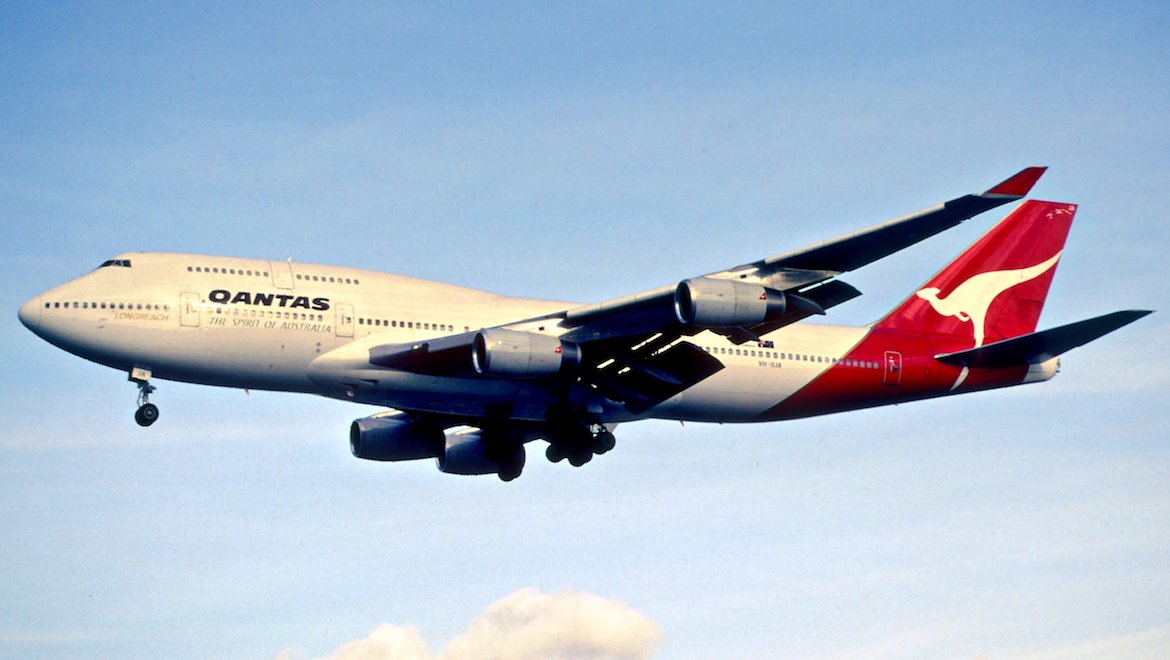
There was more bad news to come. Over the Cocos Islands, now at 41,000ft, a revised weather forecast arrived from Sydney, for INTER TS – intermittent thunderstorms – around the planned arrival time. It meant the flight needed to have an additional 30 minutes of reserve fuel over and above the minimum reserve of 30 minutes. At this stage there wasn’t even 30 minutes of reserve, let alone 60 minutes.
But the weather gods were smiling. The winds were swinging round to the tail and becoming stronger than forecast. Finally, lost time was being made up and the fuel situation was improving.
As the clock hits 11:30am in Sydney the flight at last crossed the Australian coastline high above Carnarvon in Western Australia. Flying now at 45,000ft, the fuel gauge showed 22.8 tonnes of fuel remained of the 183.5 tonnes we started with. Below us the Australian landscape is a stunning sweep of bright red and shades of ochre, scarred with river beds and lakes now full of water following recent rains.
Soon, we were overflying Woomera in South Australia and there now seemed little doubt we would reach our destination. Overhead Adelaide the winds continued to be more favourable and a revised forecast came in from Sydney changing the thunderstorm warning to heavy showers.
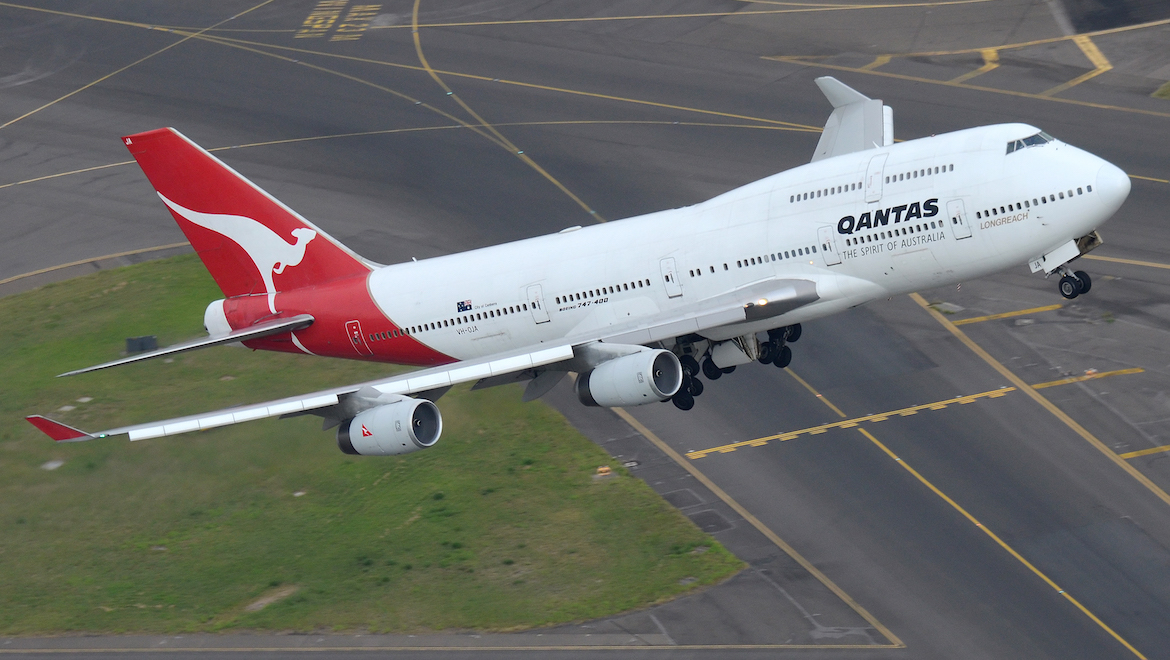
It was the news that sealed the success of the flight, which would no longer require that extra 30 minutes of fuel. In fact, when OJA touched down at Kingsford Smith it still had 5.6 tonnes of fuel, or about 45 minutes, remaining in its tanks.
The 9,640nm (17,850km) flight had taken precisely 20 hours 9 minutes and 5 seconds, smashing the previous long distance flight record of 8,945nm (16,556km) by a South African Airways 747SP flying from Seattle to Cape Town.
In the end, said Massy-Greene, despite the fuel and weather concerns, “everything worked like a Swiss watch”.
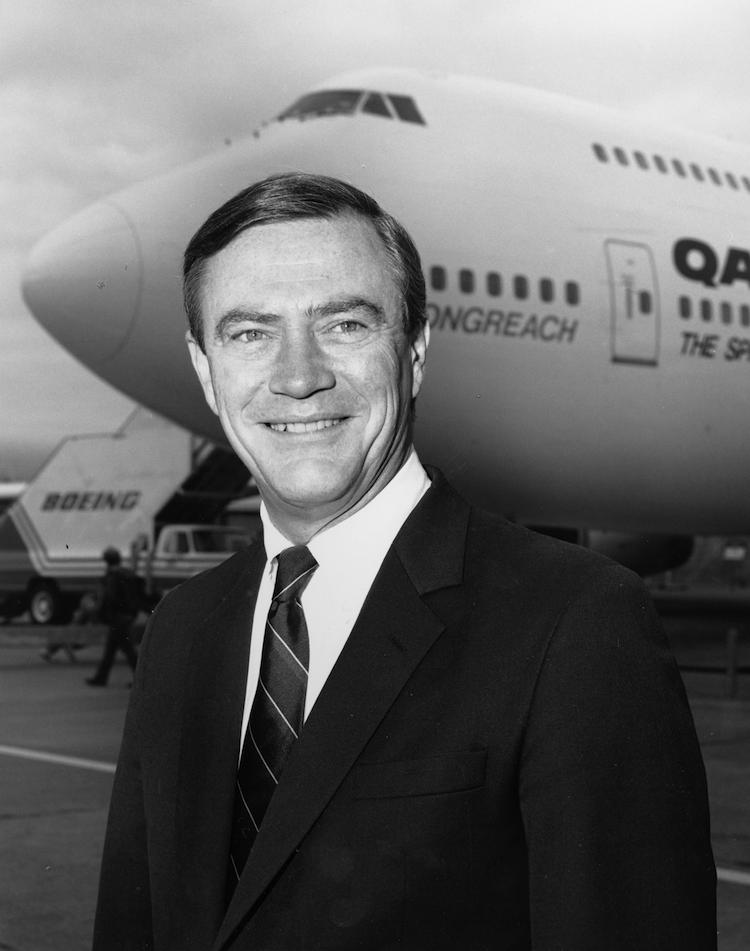
It was a far cry from the first Qantas service from London to Australia in 1935 that took between 12 and 14 days for the journey to Brisbane, with some 42 stops, including rail legs between Paris and Brindisi in Italy and Alexandria and Cairo in Egypt.
It was an illustrious start for OJA’s 25-year Qantas career.
VIDEO: News reports from 1989 of VH-OJA’s flights from London to Sydney from the Amazing Info TV YouTube channel.
Postscript: Qantas Boeing 747-400 VH-OJA City of Canberra was retired on March 8 2015, when the aircraft made the short hop from Sydney Airport to Illawarra Airport at Albion Park. Also, Captain Massy-Greene, who was at Albion Park on the day of VH-OJA was retired, died in September 2016. He was 73










